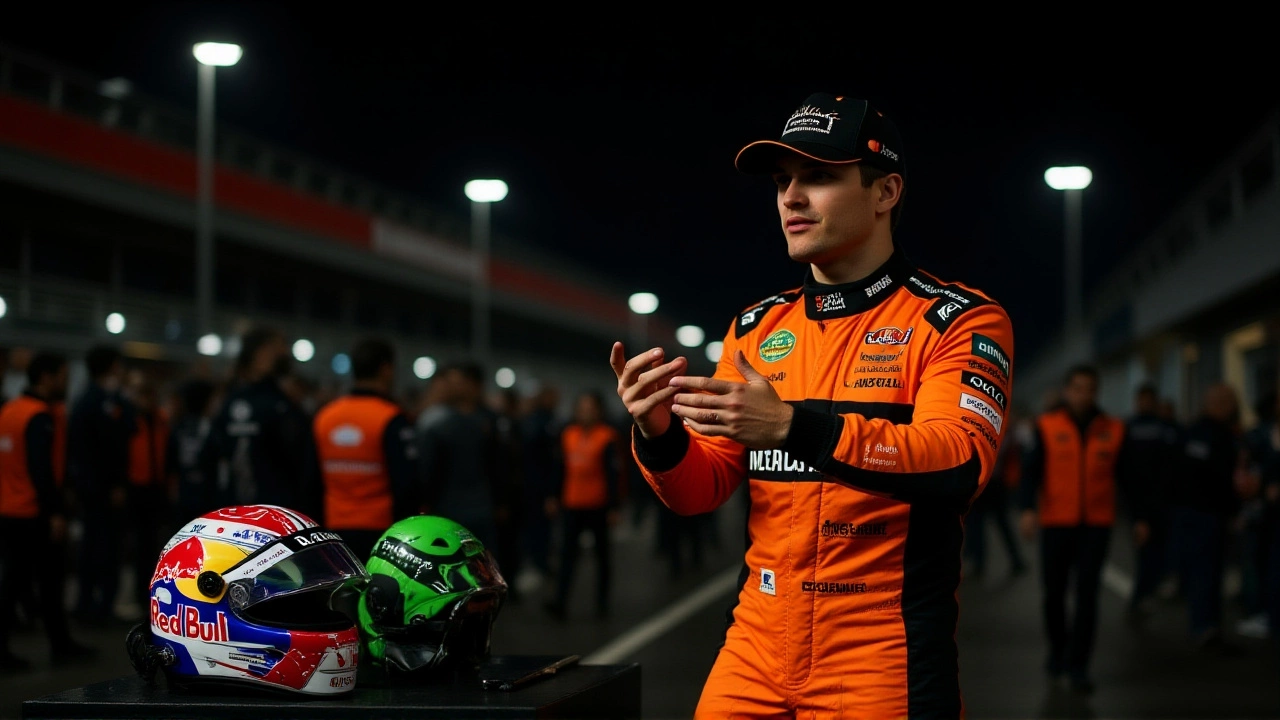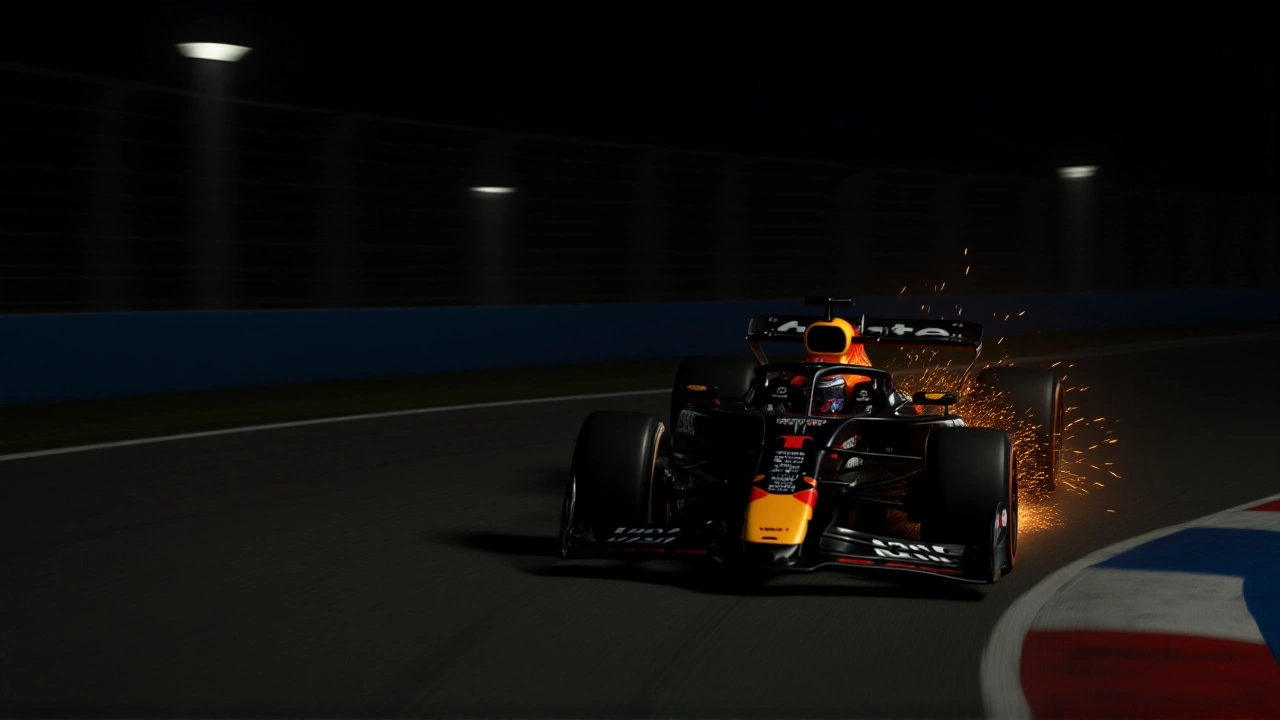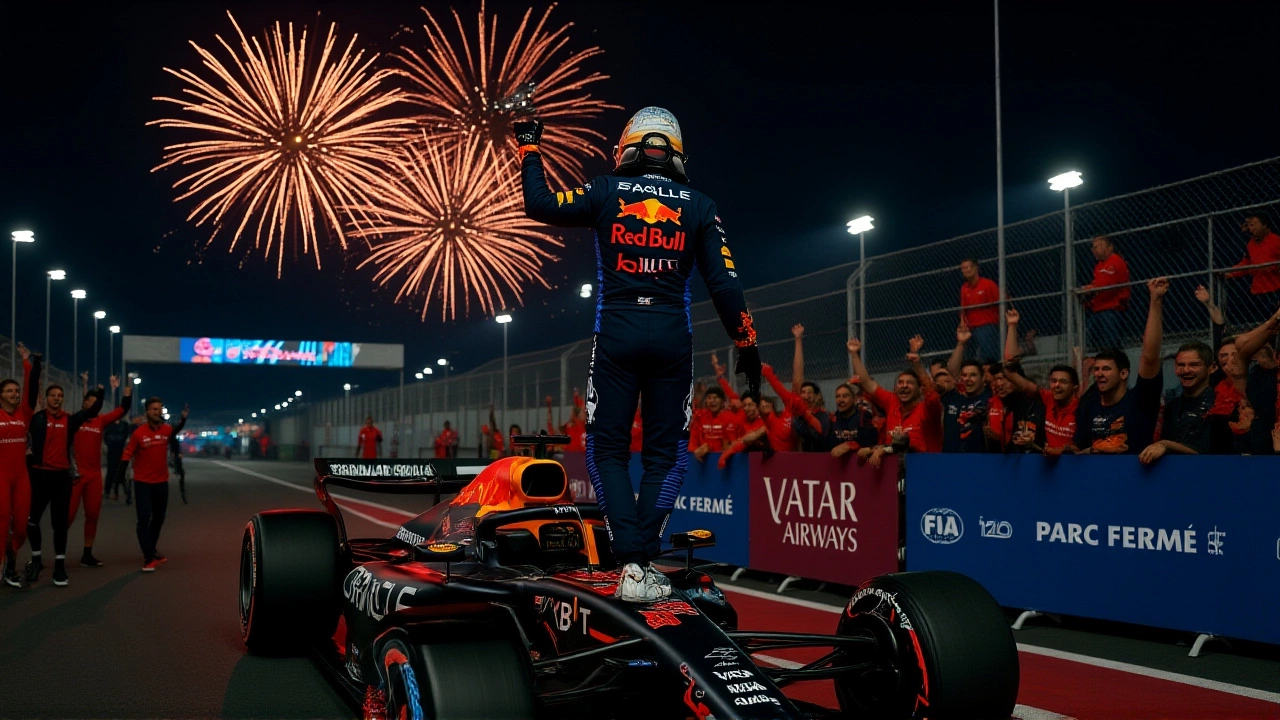McLaren's Double Las Vegas Disqualification Shakes 2025 F1 Championship Race

When Lando Norris crossed the line in second place at the Las Vegas Grand PrixLas Vegas Strip Circuit on November 22, 2025, he thought he’d sealed his grip on the 2025 FIA Formula One World Championship. Instead, just hours later, he and teammate Oscar Piastri were stripped of their results — all because their McLaren Racing cars violated a seemingly minor technical rule. The rear skid blocks on both MCL38s measured below the 9.8mm minimum thickness required by Article 3.5.9 e) of the 2025 FIA regulations. The FIA called it unintentional. But in Formula 1, intent doesn’t matter — only compliance does.
How a Millimeter Changed Everything
The Las Vegas Grand PrixLas Vegas Strip Circuit was supposed to be McLaren’s showcase. Norris, 25, had led the championship by 42 points over Max Verstappen, the 27-year-old Dutch ace racing for Oracle Red Bull Racing. Piastri sat fourth, just behind Verstappen in the standings. A clean finish would’ve all but locked the title for Norris. But post-race inspection revealed the skid blocks — the wooden plank beneath the car designed to limit ground effect and ensure safety — had worn down to 9.3mm and 9.1mm respectively. Worse, the FIA noted the measurements were even lower than the initial technical delegate’s readings.
It wasn’t a case of cheating. The stewards explicitly stated there was “no deliberate attempt to circumvent the regulations.” But the damage was done. Norris dropped from second to unclassified. Piastri went from fourth to out. The result? Verstappen, who finished first, gained 18 championship points — and suddenly, his deficit to Norris shrank from 42 to just 24. With only the Abu Dhabi Grand PrixYas Marina Circuit remaining, the title fight went from nearly over to wildly unpredictable.
The Strategy That Backfired
Here’s the twist: McLaren knew the Las Vegas track was a nightmare for their car. The bumpy, flat layout doesn’t suit their aerodynamic philosophy. But instead of playing it safe, McLaren Racing’s engineering team, led by Andrea Stella, opted for a high-downforce setup — the same one Mercedes used in 2024 — to generate more grip and heat the tires faster. They lowered the ride height. A lot.
“We pushed the limits,” Stella admitted in his post-race analysis. “We replicated Spa’s wing configuration, hoping for more grip. But we didn’t simulate the dry conditions we got on race day.”
During practice and qualifying, the track was damp. The team ran on intermediates. No long runs on slicks. No real data on how the car would behave under full load. The result? Severe porpoising — that violent, bouncing motion that plagues modern F1 cars — which wasn’t visible in practice but exploded during the race. The skid block, meant to protect the chassis, took the brunt. Norris, aware of the wear, had to lift and coast in the final laps, losing 3 to 4 seconds per lap to George Russell just to save the plank. The sparks flying from his car? They weren’t just dramatic visuals. They were a warning sign.

Championship Fallout and Rising Tensions
With Norris and Piastri disqualified, George Russell and Andrea Kimi Antonelli were elevated to second and third. Antonelli, the 19-year-old Italian rookie, earned his third podium of the season — a breakthrough moment overshadowed by McLaren’s collapse.
McLaren’s CEO, Zak Brown, and Stella issued public apologies. “I apologize to Lando and Oscar,” Stella said. “This is on us. We made a call that didn’t pay off — and it cost them everything.”
It’s the fifth and sixth disqualification of the 2025 season. Earlier, in Shanghai, Charles Leclerc and Pierre Gasly lost positions for being 1kg underweight. But this? This is different. It’s not a weight issue. It’s a calculated risk gone wrong — a team betting everything on performance, only to be undone by physics and a single millimeter.
What Happens in Abu Dhabi?
Now, the Abu Dhabi Grand PrixYas Marina Circuit isn’t just the season finale. It’s a championship decider. Verstappen needs to win. Norris needs to finish second or better. Piastri? He’s now tied with Verstappen in points — meaning if Verstappen wins and Norris falters, Piastri could even snatch the title.
McLaren will face intense scrutiny. Will they revert to a safer setup? Or will they double down? The FIA has signaled no penalties beyond disqualification, but teams are watching. If McLaren pushes the limits again, they risk more than points — they risk their reputation.

Why This Matters Beyond the Championship
This isn’t just about who wins the title. It’s about the growing tension between innovation and regulation in modern F1. Teams are forced to operate on the razor’s edge of legality. A half-millimeter here, a gram there — and the whole season unravels. The skid block rule has been around for decades. But with cars now flying closer to the ground than ever, even minor setup choices have outsized consequences.
And then there’s the human cost. Norris, who had been so calm, so consistent, now faces the pressure of a one-race showdown. Piastri, still in his second full season, watched his best chance at a podium slip away — not because he made a mistake, but because his team did.
Formula 1 doesn’t forgive. It doesn’t excuse. It just counts the numbers. And right now, those numbers tell a story no one saw coming.
Frequently Asked Questions
Why did the FIA disqualify McLaren if they didn’t cheat?
The FIA disqualified McLaren because the rear skid blocks fell below the 9.8mm minimum thickness mandated by Article 3.5.9 e) of the technical regulations — regardless of intent. F1 rules are binary: either you comply or you’re disqualified. The stewards confirmed the breach was unintentional, but the regulation doesn’t allow exceptions for mistakes, only for deliberate violations — which weren’t found here.
How did porpoising lead to the skid block failure?
Porpoising — the rapid vertical oscillation of the car — puts extreme, repeated stress on the skid block. McLaren lowered the ride height to boost downforce, worsening the effect. During the race, the dry track conditions amplified the bouncing, causing the plank to wear down faster than simulations predicted. The team had no data from long slick runs in practice, so they didn’t anticipate the wear rate.
What does this mean for Lando Norris’s championship chances?
Norris now leads Verstappen by just 24 points heading into Abu Dhabi. He must finish second or higher to secure the title, assuming Verstappen wins. If Verstappen wins and Norris finishes third or lower, Verstappen wins the championship. Even if Norris wins, Piastri could still overtake Verstappen if he finishes second — making McLaren’s strategy in Abu Dhabi a delicate balancing act.
Has this kind of disqualification happened before in F1?
Yes. In 2023, Red Bull’s Max Verstappen was disqualified from the Monaco Grand Prix for a rear wing violation. In 2024, Ferrari lost both cars’ results in Singapore due to fuel flow irregularities. But a double disqualification of a team’s top two drivers over skid block wear? That’s unprecedented in the hybrid era. The last time a team lost two cars for plank wear was in 2017, before the current aerodynamic rules.
Will McLaren change their setup for Abu Dhabi?
All signs point to yes. Sources close to the team say they’re reverting to a higher ride height and reducing rear downforce to minimize porpoising. They’re also running additional simulator sessions focused on skid block wear under dry conditions. The goal isn’t just to win — it’s to finish without another technical failure. A podium is no longer enough; they need to finish, period.
How did this affect the driver standings?
Before the disqualification, Norris led with 321 points, Piastri was second with 279, and Verstappen third with 279. After the penalty, Norris drops to 285, Piastri to 246, and Verstappen rises to 261. Verstappen is now tied with Piastri in points, meaning the top three are separated by just 24 points. The championship is effectively a three-way battle — with the title potentially decided by a single lap in Abu Dhabi.